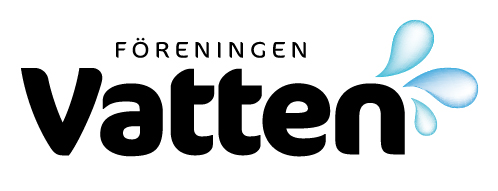DECREASED PHOSPHORUS LOADING CHANGES PHYTOPLANKTON COMPOSITION AND BIOMASS IN THE STOCKHOLM ARCHIPELAGO
The Stockholm archipelago has been used as a receiver for waste water for several decades. During 1968-73 the waste water treatment was improved, after which the phosphorus load significantly decreased. Since 1970 concentrations of nitrogen, phosphorus and other hydrographical parameters were measured along the eutrophication gradient from Stockholm. Quantification of cyanobacteria and chlorophyll a were […]
BROMMA RENINGSVERKS UTLOPP TILL SALTSJÖN-SALTSJÖTUNNELN / The Outlet from the Bromma Sewage Treatment Plant to the Sea – a Full Face Tunnel Boring Project
Bromma sewage treatment plant for 260,000 persons has its outlet in Lake Mälaren, which also serves the greater Stockholm region as a source of drinking water. The erection of a heat pump 4 km from the plant has opened the possibility to choose another more suitable receiving water in the sea outside Stockholm. The heat […]
NY STYR- OCH ÖVERVAKNINGSANLÄGGNING FÖR HENRIKSDALS RENINGSVERK, New Control and Monitoring Plant for Henriksdal Water Treatment Plant
Henriksdal Sewage Treatment Plant is designed to serve approximately 725,000 p.e., and is thus Sweden’s largest. In order to be able to meet the increasingly stringent demands for treatment and control of the different processes, preliminary studies have been conducted in joint consultation between invited suppliers the staff of the plant. The objective of the […]
BROMMA RENINGSVERK – ERFARENHETER AV RENING FÖRSTA ÅRET EFTER OMBYGGNAD / Bromma Sewage Treatment Plant – Experiences from the Treatment during the First Year after Reconstruction
After the Bromma sewage treatment plant was enlarged and reconstructed, the operation of the plant has been improved. Temporary requirements concerning the effluent are applied today until the final decision of the environmental authorities. The requirements are presented below together with the appropriate result from 1985. It is rather difficult to reach a complete nitrification […]
OMBYGGNADER AV BROMMA RENINGSVERK ÅREN 1980-1984 / Bromma Wastewater Treatment Plant – Conversions during the Period 1980-1984
Bromma Wastewater Treatment Plant, which serves the western part of Stockholm, comprises two units: the Åkeshov plant and the Nockeby plant. Today, mechanical and chemical treatment takes place at Åkeshov, accompanied by sludge treatment, while the biological treatment is carried out at the Nockeby plant. At the beginning of the 1980’s considerable conversion and extension […]
JÄRVA DAGVATTENTUNNEL ERFARENHETER AV FEM ÅRS DRIFT / Järva Urban Storm Water Tunnel Experiences from five Years of Operation
Storm water from 1,520 acres of Järvafältet north of Stockholm is treated by means of sedimentation in a 12 km long tunnel system with a volume of 275,000 m3. Storm water is thus given a long detention time before it is pumped out into Edsviken. Earlier a report has been given of one year’s pilot […]
FÖRNYELSEPLANERING AV AVLOPPSLEDNINGAR I STOCKHOLM / Sewer Rehabilitation in Stockholm
The Stockholm Water and Wastewater Works have studied the needs for sewer rehabilitation to maintain an acceptable standard. The planning of the rehabilitation is being performed in three different steps. The first step was an overview in 1983 called ”The Stockholm Sewer System. Master Plan 1983”. It includes a summary of reported problems together with […]
RENOVERING AV VA-LEDNINGAR / Renovation of Water Conduits and Sewers
Relaying water conduits and sewers in the conventional manner is an extremely expensive operation. In the central parts of Stockholm the price of relaying pipelines per metre is normally SEK 10,000. Although on the outskirts of the city the corresponding price is admittedly lower, somewhere about SEK 5,000, this too may be considered high in […]
VATTENVERKEN I STOCKHOLM AV IDAG / The Water Works in Stockholm of Today
Recently Stockholm’s two water treatment plants – at Norsborg and on the island of Lovö – have been completely automated and computerised. At the Lovö plant there is already a central computer with understations for steering and controlling the plant. At the end of 1985 corresponding equipment was ordered for the Norsborg plant from the […]
STOCKHOLMS VATTENFÖRSÖRJNING OCH AVLOPP KORT HISTORIK / Stockholm’s Water Supply and Sewerage. A Brief History
The location of the settlement that became the nucleus of today’s Stockholm was a success from the point of view of water supply. A huge boulder-ridge, which provided wells with abundant supplies of water, passed through Stadsholmen – the area now referred to as Gamla Stan. The esker enters the current city area at Norrtull […]
